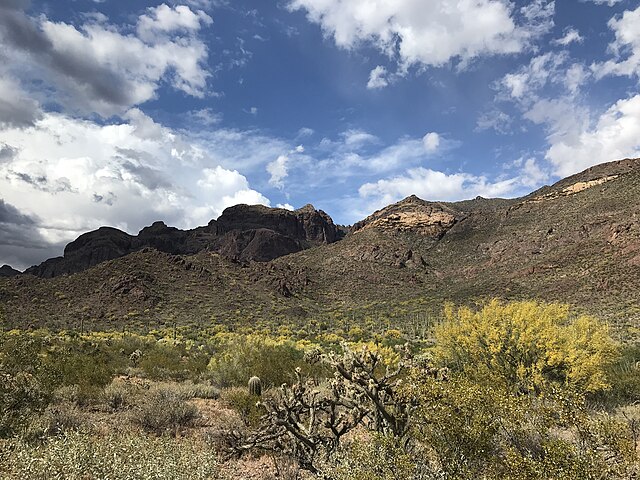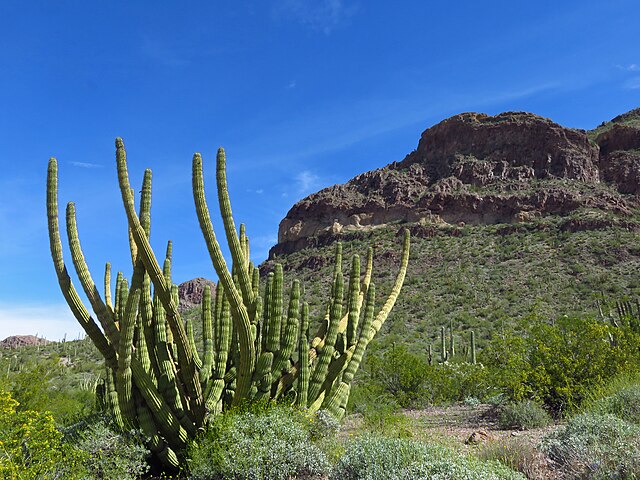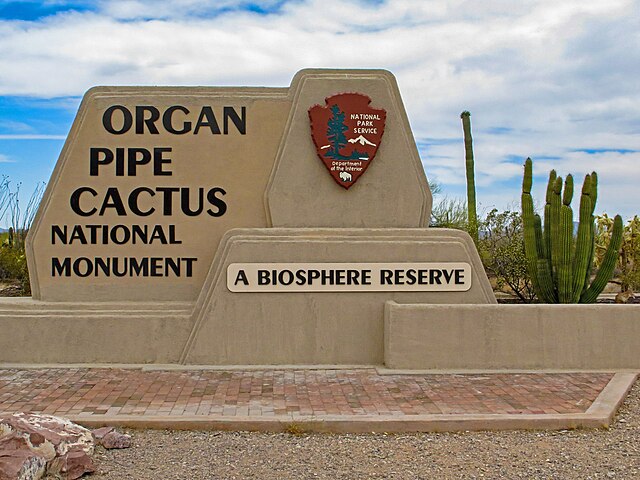Have you ever wondered what it feels like to step into a living cathedral made of towering cacti? Welcome to Organ Pipe Cactus National Monument, where nature has crafted one of the most spectacular desert landscapes in North America. This hidden gem in southern Arizona offers visitors an unforgettable journey through the Sonoran Desert’s most pristine wilderness.
Nestled along the Mexican border, this 330,689-acre preserve protects the northernmost population of organ pipe cacti in the United States. It’s not just about the cacti, though – this monument serves as a vital sanctuary for countless desert species and offers some of the most breathtaking scenery you’ll find anywhere in the American Southwest.
What Makes Organ Pipe Cactus National Monument Special?
You might be asking yourself: what sets this place apart from other desert destinations? The answer lies in its unique position as a biological crossroads where two distinct desert ecosystems meet and mingle.
The Iconic Organ Pipe Cactus: Nature’s Cathedral
The star of the show is undoubtedly the organ pipe cactus (Stenocereus thurberi), a magnificent plant that can live for over 150 years and grow up to 20 feet tall. Unlike its famous cousin, the saguaro, the organ pipe cactus grows multiple arms from its base, creating a cluster that resembles the pipes of a church organ – hence the name.
These remarkable plants are incredibly rare in the United States, found naturally only in this monument and a small area of Arizona. They’re perfectly adapted to the harsh desert environment, storing water in their thick stems and blooming with beautiful white flowers that open only at night. It’s like nature’s own nocturnal light show!
Biodiversity in the Sonoran Desert
But wait – there’s so much more than just cacti here. The monument hosts an incredible variety of plant life, including 28 different cactus species. You’ll encounter towering saguaros, barrel cacti, cholla, and prickly pear, creating a diverse tapestry of desert vegetation.
The wildlife is equally impressive. From tiny desert mice to massive javelinas, from colorful desert birds to elusive mountain lions, this ecosystem supports an amazing array of life. It’s a testament to nature’s resilience and adaptability.
Location and How to Get There
Getting to Organ Pipe Cactus National Monument requires a bit of planning, but the journey is absolutely worth it. The monument is located in southwestern Arizona, about 140 miles southwest of Phoenix and 35 miles south of Ajo.
Driving Directions and Access Points
The main entrance is accessible via Highway 85, which runs north-south through the monument. If you’re coming from Phoenix, take Interstate 10 west to Highway 85 south. From Tucson, you can take Highway 86 west to Highway 85 south – it’s about a 2.5-hour drive that takes you through increasingly spectacular desert scenery.
The nearest major town is Ajo, Arizona, which offers basic services like gas, food, and supplies. It’s your last chance to stock up before entering the monument, so don’t skip this stop!
Border Considerations and Safety
Here’s something important to keep in mind: the monument shares a 30-mile border with Mexico. While this adds to its unique character, it also means you need to be aware of border-related activities. The area is actively patrolled by Border Patrol agents, and you might encounter checkpoints during your visit.
Stay on designated trails and roads, and always carry identification. The remote location means cell phone service is limited, so plan accordingly.
Best Time to Visit Organ Pipe Cactus National Monument

Timing is everything when it comes to desert travel. The Sonoran Desert can be unforgiving during certain times of the year, but absolutely magical during others.
Seasonal Weather Patterns
The ideal time to visit is from October through April, when temperatures are more moderate and comfortable for hiking and camping. Winter days are pleasantly warm (60-70°F), while nights can be quite cool (40-50°F). Spring brings the added bonus of wildflower blooms that transform the desert into a colorful wonderland.
Summer months (May through September) are brutally hot, with temperatures often exceeding 100°F. Unless you’re an experienced desert traveler, it’s best to avoid these months. The heat isn’t just uncomfortable – it can be dangerous.
Wildflower Blooms and Wildlife Activity
Spring is absolutely magical here. From February through April, depending on winter rainfall, the desert explodes with wildflowers. Brittlebush, desert marigold, ghost plant, and desert lupine create a stunning carpet of color against the stark desert backdrop.
This is also when many desert animals are most active. Cooler temperatures bring them out during daylight hours, giving you better chances for wildlife spotting.
Top Activities and Attractions
What can you actually do at Organ Pipe Cactus National Monument? More than you might think! This isn’t just a drive-through destination – it’s a place that rewards those who take time to explore.
Hiking Trails for Every Skill Level
The monument offers numerous hiking opportunities, from easy nature walks to challenging backcountry adventures. Each trail provides a different perspective on this remarkable ecosystem.
Desert View Trail
This easy 1.2-mile loop trail is perfect for families and those new to desert hiking. The trail starts near the visitor center and offers excellent views of the Ajo Mountains and plenty of opportunities to see organ pipe cacti up close. Interpretive signs along the way help you understand the desert ecosystem.
The trail is mostly flat with a few gentle rises, making it accessible for most visitors. Early morning or late afternoon walks are particularly rewarding, as the lighting brings out the desert’s natural beauty.
Ajo Mountain Drive
This 21-mile scenic drive is a must-do experience. The graded dirt road takes you through some of the monument’s most spectacular scenery, including dense stands of organ pipe cacti and stunning mountain vistas.
The drive includes several stops where you can get out and explore short trails. The Bull Pasture Trail (1.8 miles) and Arch Canyon Trail (1.2 miles) are particularly popular. Allow at least half a day for this adventure – you’ll want to stop frequently for photos and wildlife watching.
Photography Opportunities
Are you a photography enthusiast? This place is a paradise for shutterbugs. The interplay of light and shadow on the cacti creates endless opportunities for stunning shots. Golden hour (just after sunrise and before sunset) is particularly magical.
The contrast between the towering cacti and the rugged mountain backdrop provides dramatic compositions. Don’t forget to look for details too – the intricate patterns of cactus spines and the delicate beauty of desert flowers offer intimate subjects for close-up photography.
Stargazing and Night Sky Programs
The monument’s remote location and minimal light pollution make it an excellent destination for stargazing. The night sky here is simply spectacular, with the Milky Way clearly visible on clear nights.
During winter months, the monument often hosts astronomy programs led by rangers or volunteer astronomers. These programs provide telescopes and expert guidance to help you explore the cosmos above this desert wonderland.
Wildlife Watching in the Monument

The Sonoran Desert might look barren at first glance, but it’s actually teeming with life. You just need to know when and where to look.
Desert Animals You Might Encounter
The monument is home to over 40 mammal species, including desert bighorn sheep, javelinas (wild pigs), coyotes, and mountain lions. While large predators are rarely seen, smaller creatures like ground squirrels, kangaroo rats, and various bat species are more commonly observed.
Reptiles are abundant here. You might spot desert tortoises, various lizard species, and yes, snakes. Don’t let that scare you away – most desert reptiles are harmless and actually beneficial to the ecosystem. Just maintain a respectful distance and watch where you step.
Bird Watching Hotspots
Bird enthusiasts will be delighted by the diversity of species found here. The monument is home to over 270 bird species, including permanent residents and seasonal migrants.
Common year-round residents include cactus wrens, curve-billed thrashers, and Gambel’s quail. During migration seasons, you might spot vermillion flycatchers, various warbler species, and even the occasional roadrunner.
Water sources like the monument’s few permanent water holes are excellent spots for bird watching, especially during hot weather when birds come to drink.
Camping and Accommodation Options
If you want to fully experience the magic of the desert, staying overnight is essential. There’s nothing quite like watching the sunset paint the cacti in golden light, followed by a night under the star-filled desert sky.
Twin Peaks Campground
The monument’s only campground, Twin Peaks, offers 208 sites in a beautiful desert setting. The campground is open year-round, though it’s most popular during the cooler months from October through April.
Sites include picnic tables and fire rings, but there are no hookups for RVs. The campground does have restrooms with flush toilets and potable water. Sites are available on a first-come, first-served basis, so arrive early during peak season.
The campground’s desert location means you’ll fall asleep to the sounds of coyotes calling and wake up to spectacular sunrises over the Ajo Mountains. It’s an experience that connects you deeply with the desert environment.
Nearby Lodging Alternatives
If camping isn’t your style, the town of Ajo offers several lodging options about 35 miles north of the monument. These include small motels, bed and breakfasts, and vacation rentals.
Staying in Ajo means you’ll need to drive to the monument each day, but it does provide access to restaurants, shops, and other amenities. It’s a good compromise for those who want to explore the monument but prefer more comfortable accommodations.
Visitor Center and Educational Programs
Education is a crucial part of the monument experience. The visitor center serves as your gateway to understanding this unique ecosystem.
Exhibits and Interpretive Displays
The visitor center features excellent exhibits about the Sonoran Desert ecosystem, the organ pipe cactus, and the cultural history of the area. Interactive displays help you understand the complex relationships between plants, animals, and climate that make this ecosystem function.
You’ll learn about the fascinating adaptations that allow plants and animals to thrive in this harsh environment. Did you know that organ pipe cacti can live for over 150 years and don’t even begin to flower until they’re 35 years old? These kinds of amazing facts bring the desert to life.
Ranger-Led Programs
Throughout the year, park rangers offer various programs that enhance your visit. These might include guided walks, evening programs about desert ecology, and cultural history presentations.
During peak season (winter and spring), programs are offered more frequently. These ranger-led activities provide insights you simply can’t get on your own and are highly recommended for first-time visitors.
Safety Tips and Preparation
Desert environments can be unforgiving, but with proper preparation, your visit can be both safe and enjoyable. The key is respecting the environment and being prepared for its challenges.
Desert Survival Essentials
Water is your most important consideration. The desert’s dry air and intense sun can lead to dehydration quickly, even during cooler months. Bring more water than you think you’ll need – at least one gallon per person per day.
Sun protection is crucial. Wear a wide-brimmed hat, long-sleeved shirts, and pants. Use sunscreen liberally and reapply frequently. The desert sun reflects off the ground, creating intense exposure from multiple angles.
Proper footwear is essential. Sturdy hiking boots protect your feet from sharp rocks, thorns, and potentially dangerous creatures. Avoid sandals or lightweight shoes when hiking.
Weather-Related Precautions
Desert weather can change quickly. Winter nights can be surprisingly cold, while summer days can be life-threateningly hot. Always check weather forecasts and be prepared for temperature extremes.
Flash floods are a real danger in desert washes, even when it’s not raining where you are. Never camp or park in washes, and avoid low-lying areas during monsoon season (July-September).
Conservation Efforts and Challenges
Organ Pipe Cactus National Monument faces numerous conservation challenges, from climate change to human impacts. Understanding these issues helps visitors appreciate the delicate balance of desert ecosystems.
Protecting the Sonoran Desert Ecosystem
The monument serves as a crucial refuge for species that are under pressure elsewhere. Urban development, agriculture, and water usage have significantly reduced Sonoran Desert habitat throughout the region.
Conservation efforts focus on protecting water sources, maintaining wildlife corridors, and monitoring plant and animal populations. Research projects help scientists understand how desert ecosystems respond to environmental changes.
Border activities present unique challenges. The monument works closely with law enforcement agencies to balance border security needs with ecosystem protection. This includes repairing damage from illegal border crossings and monitoring impacts on wildlife.
Climate Change Impact
Climate change poses significant threats to desert ecosystems. Rising temperatures, changing precipitation patterns, and increased frequency of extreme weather events all affect the delicate balance of desert life.
The monument participates in various research projects to understand these impacts and develop strategies for protecting vulnerable species. Long-term monitoring helps scientists track changes and adapt management practices accordingly.
Planning Your Visit: Practical Information

Ready to plan your adventure? Here’s what you need to know to make the most of your visit to Organ Pipe Cactus National Monument.
Entrance Fees and Permits
The monument charges an entrance fee of $25 per vehicle (valid for 7 days) or $15 per person on foot or bicycle. Annual passes for the monument cost $45, while the America the Beautiful National Parks Annual Pass ($80) provides access to all national parks and monuments.
Camping fees are separate from entrance fees. Twin Peaks Campground charges $20 per night for regular sites. Group camping is available with advance reservations.
What to Pack for Your Trip
Beyond the essential safety items mentioned earlier, consider bringing:
- Binoculars for wildlife and bird watching
- Camera with extra batteries (the desert drains batteries quickly)
- Field guides for plants and animals
- Comfortable camping chairs for relaxing at your campsite
- Cooler with ice for food and drinks
- First aid kit
- Maps and compass (GPS can be unreliable in remote areas)
- Flashlight or headlamp with extra batteries
Conclusion
Organ Pipe Cactus National Monument offers an extraordinary opportunity to experience one of North America’s most unique desert ecosystems. From the towering organ pipe cacti that give the monument its name to the incredible diversity of plant and animal life, this protected area showcases the remarkable beauty and resilience of the Sonoran Desert.
Whether you’re interested in hiking scenic trails, photographing stunning landscapes, learning about desert ecology, or simply finding peace in the vast desert expanse, this monument has something special to offer. The combination of accessibility and wilderness, education and adventure, makes it a destination that appeals to a wide range of visitors.
Planning ahead is key to a successful visit. Come prepared for desert conditions, respect the fragile ecosystem, and take time to truly experience this remarkable place. The memories you create here will last a lifetime, and you’ll leave with a deeper appreciation for the incredible diversity and beauty of desert environments.
Remember, you’re not just visiting a tourist destination – you’re entering a living laboratory where scientists study desert ecology and conservation. Your visit helps support these important efforts while providing you with an unforgettable adventure in one of America’s most spectacular natural areas.
Frequently Asked Questions
Q1: Can I visit Organ Pipe Cactus National Monument with my RV?
A1: Yes, RVs are welcome at Twin Peaks Campground, though there are no hookups available. Sites can accommodate RVs up to 35 feet long. The campground has restrooms with flush toilets and potable water. Some roads within the monument may not be suitable for large RVs, so check with rangers for current road conditions.
Q2: Are pets allowed in the monument?
A2: Pets are allowed in the monument but must be kept on a leash at all times and are only permitted in developed areas, campgrounds, and on roads. They are not allowed on trails or in the backcountry. The desert environment can be dangerous for pets due to extreme temperatures, thorny plants, and wildlife, so consider leaving them at home.
Q3: Is it safe to visit the monument given its location near the Mexican border?
A3: Yes, the monument is generally safe for visitors. The area is actively patrolled by Border Patrol agents, and the National Park Service works closely with law enforcement agencies. However, visitors should stay on designated trails and roads, always carry identification, and be aware that cell phone service is limited in remote areas.
Q4: What’s the best way to see organ pipe cacti in the monument?
A4: The best locations to see organ pipe cacti are along the Desert View Trail near the visitor center and during the Ajo Mountain Drive. The 21-mile scenic drive provides numerous opportunities to see these rare cacti up close. Early morning and late afternoon provide the best lighting for viewing and photography.
Q5: Do I need a high-clearance vehicle to explore the monument?
A5: Most of the monument’s main roads are accessible to regular passenger vehicles, including the paved road to the visitor center and campground. However, the Ajo Mountain Drive is a graded dirt road that may require higher clearance, especially after rain. Check current road conditions with rangers before attempting this drive, and consider your vehicle’s capabilities and your comfort level with dirt roads.

